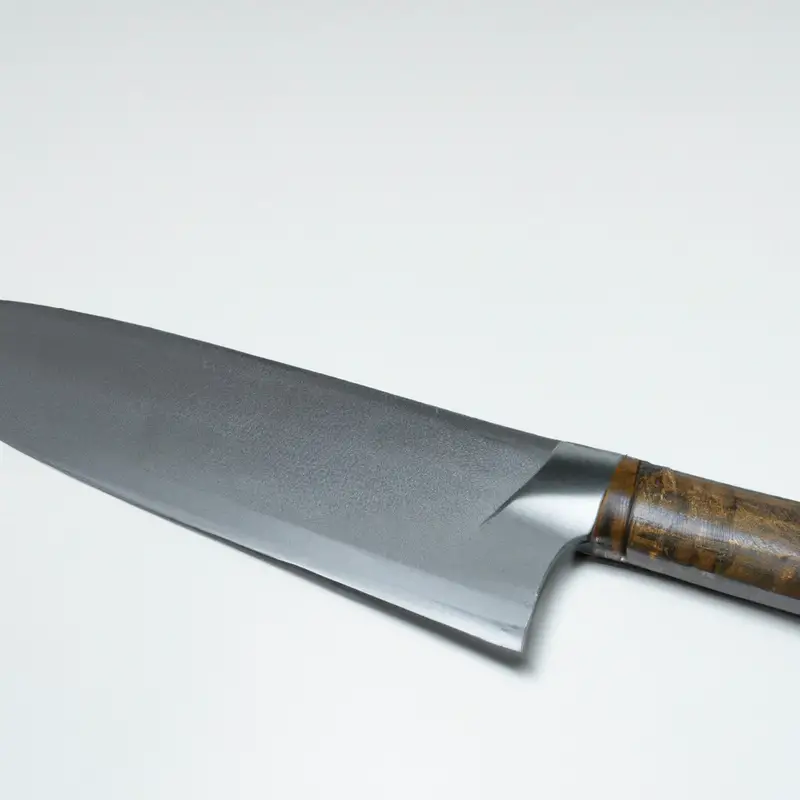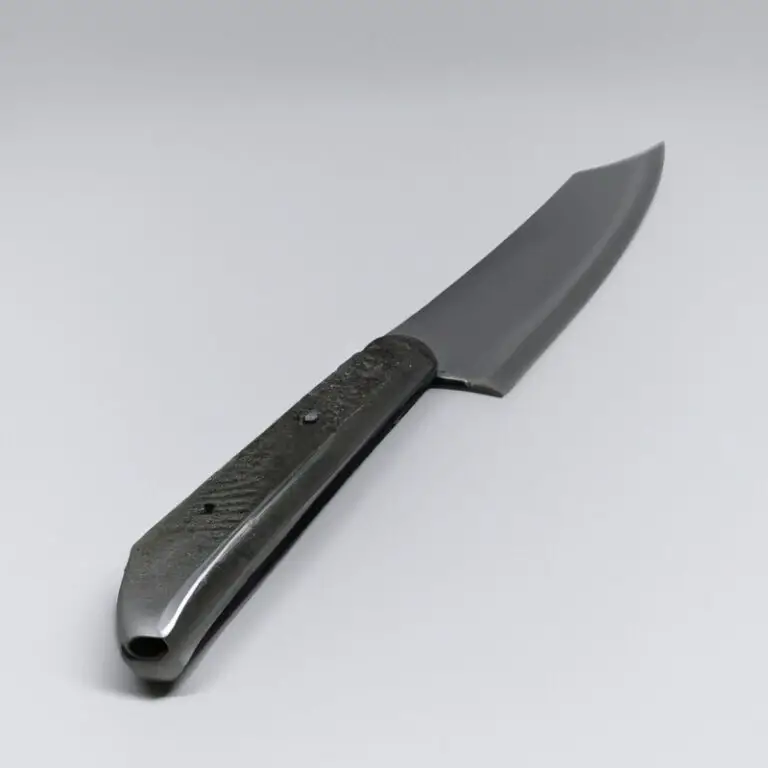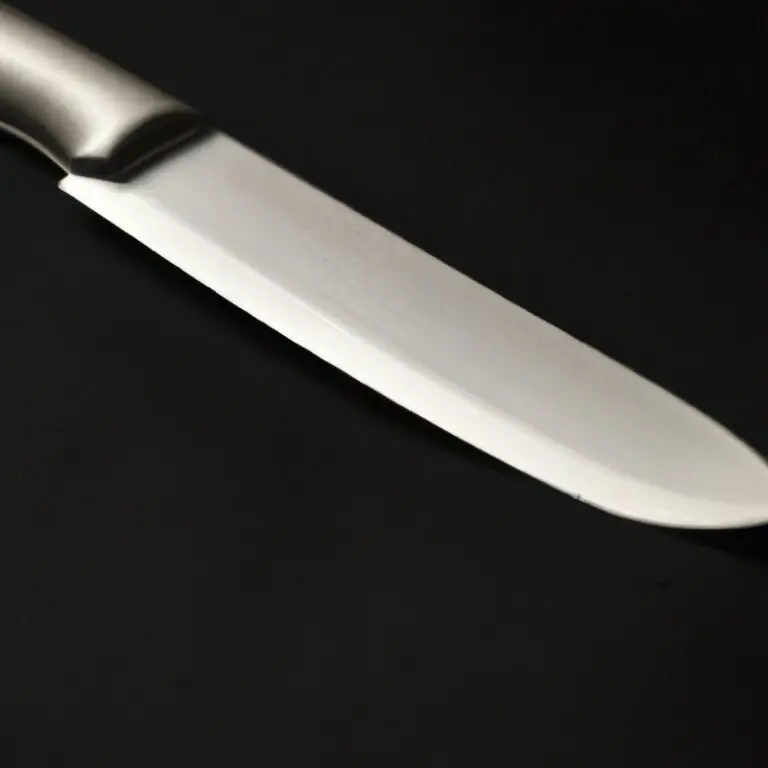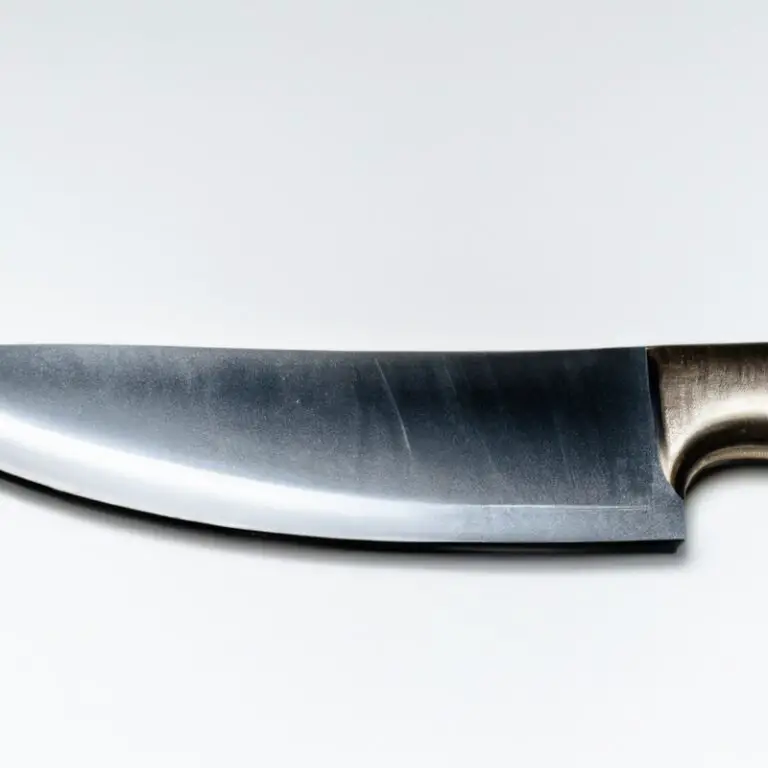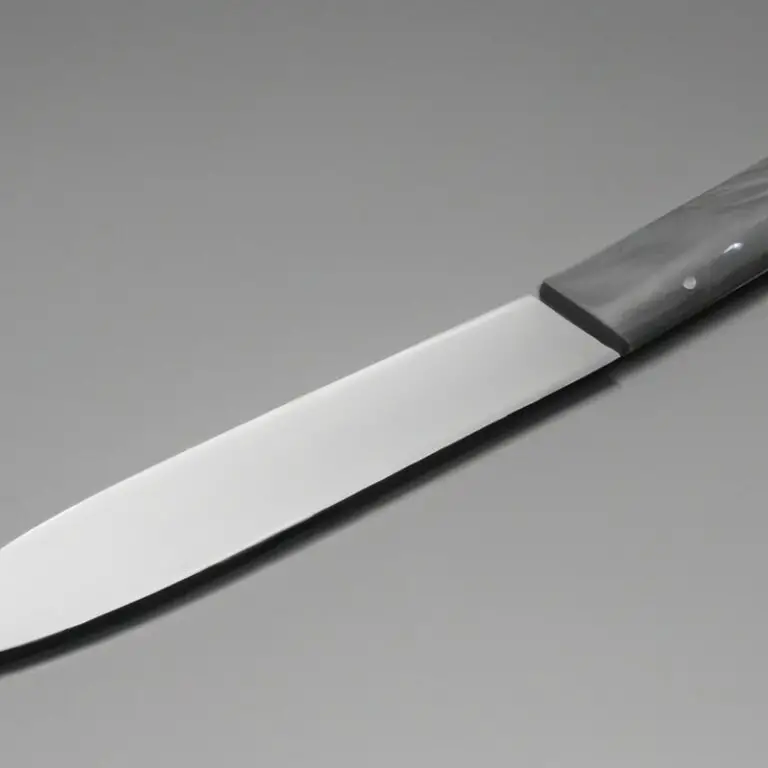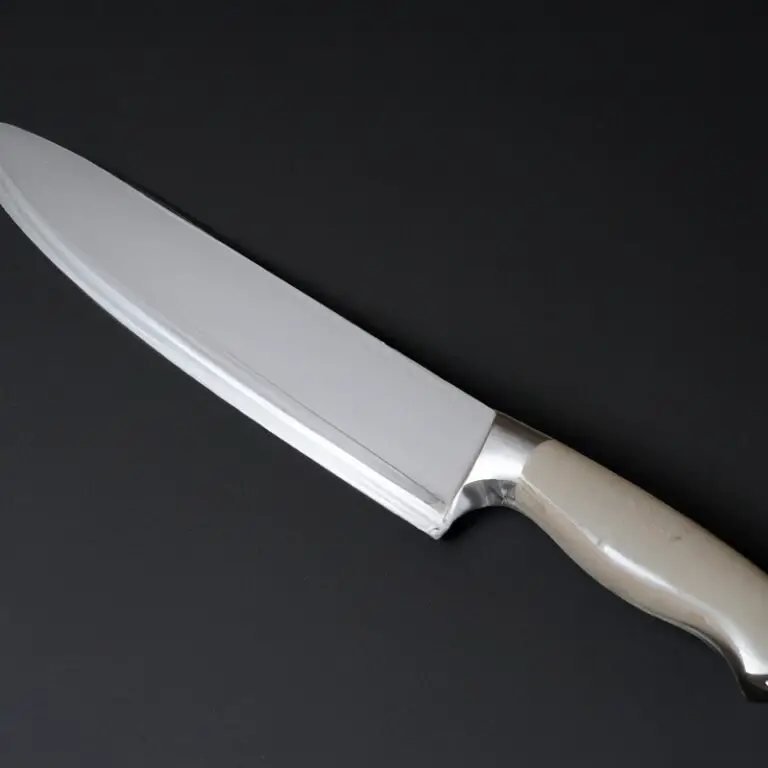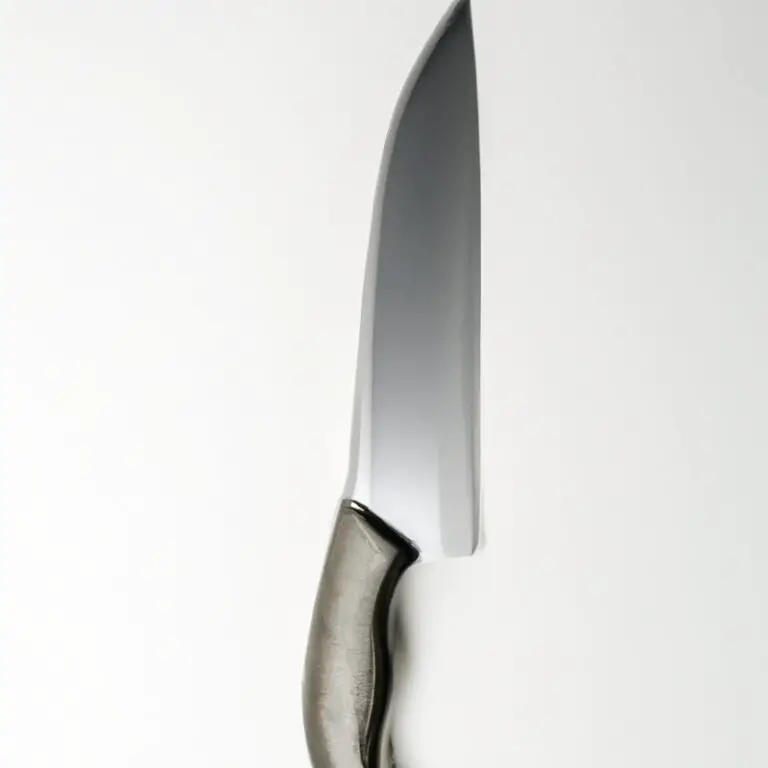How To Maintain The Sharpness Of a Gyuto Knife For An Extended Period? Expert Tips
Key Takeaways:
- Proper maintenance, such as routine honing and sharpening, is essential in ensuring the longevity and sharpness of your Gyuto knife.
- Using the correct cutting technique and avoiding excessive force or twisting can also help preserve the blade’s sharpness.
- Storing your Gyuto knife correctly, such as in a knife block or on a magnetic strip, can also prevent damage and maintain its sharp edge.
- Consulting with a professional or experienced chef can provide additional tips and insights on how to prolong the sharpness of your Gyuto knife.
A dull kitchen knife can make meal prep an arduous task. That’s why it’s essential to keep your Gyuto knife sharp.
But, how do you maintain its sharpness for an extended period?
As someone who has worked in the culinary industry for years, I understand the importance of a sharp knife. In this article, I’ll walk you through the anatomy of a Gyuto knife, the benefits of sharpening it, and the tools and techniques you can use to keep your blade razor-sharp.
No more struggling to cut through meats, veggies, or fruits with a dull blade.
Let’s get started!
| Step | Description |
|---|---|
| 1 | * Use a honing rod before and after each use to keep the blade aligned and to remove any microscopic burrs or nicks in the blade. * Hold the honing rod vertically with the tip touching a stable surface and the handle in the opposite hand from the knife. Place the blade at the top of the rod and slide it down in a sweeping motion while maintaining a consistent angle. Repeat on the other side. |
| 2 | * Sharpen the blade with a whetstone every 6 months or as needed for heavy use. * Soak the stone in water for 5-10 minutes before use. Place it on a non-slip surface and hold the knife at a consistent angle as you run it back and forth across the stone. Start with the coarse grit and progress to the finer grit for a polished edge. |
| 3 | * Protect the blade from moisture and damage. Dry it thoroughly after each use and store it in a protective sheath or knife block. * Avoid using the knife on hard or frozen foods, which can damage the edge. Use a cutting board made of softwood or synthetic material, not glass or metal. |
Understanding the anatomy of a Gyuto knife
A Gyuto knife is a Japanese-style chef’s knife that is versatile and efficient in the kitchen. To maintain the sharpness of your Gyuto knife, it’s essential to have a good understanding of its anatomy.
The blade of a Gyuto knife usually ranges from 7 to 10 inches long and has a flat or slightly curved cutting edge.
The spine of the blade runs from the bolster to the tip of the knife, and the edge is either double or single beveled. The bolster is a thick piece of metal located at the base of the blade that serves as a finger guard and helps balance the knife.
The handle of a Gyuto knife can be made of various materials such as wood, plastic, or composite materials and has a comfortable grip that provides a firm hold while cutting.
Understanding the anatomy of your Gyuto knife will help you sharpen it correctly, use it efficiently, and maintain its sharpness for a more extended period.
The importance of sharpening your Gyuto knife
The importance of sharpening your Gyuto knife cannot be overstated. A sharp knife makes your cutting tasks safer, quicker, and more efficient.
Dull blades require more pressure and can slip, leading to injuries.
A dull knife also compromises the quality of your food, leading to uneven cuts and damage to delicate ingredients. Sharpening your Gyuto knife regularly maintains its longevity and ensures that it remains an indispensable tool in your kitchen.
Sharpening tools for maintaining the sharpness of a Gyuto knife
To maintain the sharpness of a Gyuto knife, it is important to use the right sharpening tools. The two primary tools for sharpening a Gyuto knife are honing rods and whetstones.
Honing rods are perfect for maintaining the sharpness of the blade in between uses, while whetstones are used for sharpening dull blades.
When choosing a honing rod, it is essential to select the right rod for your knife’s blade material. Rods made of ceramic or diamond-coated steel work well for Gyuto knives.
When using whetstones, pay attention to the grit level.
The lower the grit level, the coarser the stone, and the higher the number, the finer the stone. It is recommended to use a 1000 grit stone for sharpening and 4000-6000 grit for polishing.
By using the appropriate sharpening tools, you can maintain the sharpness of your Gyuto knife for an extended period.
How to sharpen a Gyuto knife using a honing rod
To sharpen a Gyuto knife using a honing rod, follow these steps:
- Hold the honing rod vertically, with the tip resting on a sturdy surface.
- Hold the Gyuto knife at a 20-degree angle against the honing rod.
- Swipe the knife down the honing rod, from hilt to tip, while maintaining the angle.
- Repeat on the other side of the blade.
- Alternate swipes until you’ve sharpened each side of the knife 5-10 times.
- Test the sharpness by gently slicing through a piece of paper. If it doesn’t glide effortlessly, repeat the process.
When using a honing rod, it’s essential to maintain a consistent angle to avoid damaging the blade. Too much pressure can also be detrimental.
Regular honing can keep your Gyuto knife sharp, but it’s important to note that honing isn’t a replacement for sharpening with whetstones.
Honing simply realigns the edge, whereas whetstones remove metal to create a new, sharp edge.
How to sharpen a Gyuto knife using whetstones
To sharpen a Gyuto knife using whetstones, you should follow these steps:
- Choose the right whetstone: typically, a 1000-grit whetstone is ideal for sharpening a Gyuto knife.
- Soak the whetstone in water for 15-20 minutes before use.
- Hold the knife at a 15-20 degree angle against the whetstone.
- Use a lubricant to reduce friction between the stone and the blade. You can use water, honing oil, or cooking oil.
- Move the blade along the stone in a circular motion, making sure to maintain the same angle throughout the process.
- Flip the blade and repeat on the other side.
- Repeat this process on a finer-grit whetstone, such as a 4000-grit stone.
- Once finished, rinse the blade with water and dry it thoroughly with a towel.
Sharpening your Gyuto knife using whetstones can be time-consuming and requires practice to perfect, but it is the most effective way to maintain the sharpness of your knife. With regular maintenance, your Gyuto knife can last for many years.
The correct sharpening angle for a Gyuto knife
The correct sharpening angle for a Gyuto knife is between 15 to 20 degrees. A lower angle provides a sharper edge but is more delicate, and a higher angle creates a more robust edge but is not as sharp.
It is best to choose an angle that suits your type of cut and the knife’s use.
To maintain the correct angle, use a sharpening guide or honing rod to keep the blade at the optimal angle during sharpening. Be consistent with your angle, and ensure both sides of the blade are sharpened evenly for the best results.
Over time, you may need to adjust the sharpening angle as the blade becomes duller.
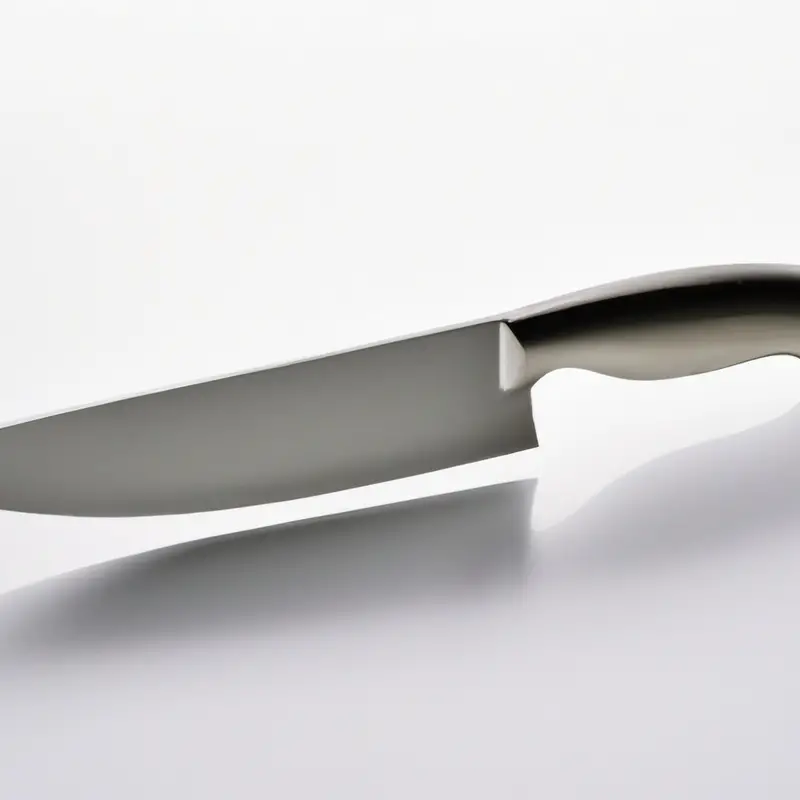
Tips for properly using a honing rod on your Gyuto knife
Tips for properly using a honing rod on your Gyuto knife:
- Hold the honing rod vertically with the tip resting on a non-slip surface.
- Hold the knife at a 20-degree angle to the rod with the blade facing away from you.
- Place the heel of the knife blade at the top of the honing rod near the handle.
- Pull the knife down and towards you in a sweeping motion, while maintaining the same angle.
- Repeat this motion on both sides of the blade, alternating between sides after every stroke.
- Remember to apply only light pressure on the knife, as too much pressure can damage the blade.
- After honing, wipe down the blade to remove any metal particles that may have accumulated during the process.
Follow these steps, and honing your Gyuto knife will become effortless, ensuring that you maintain its sharpness for an extended period.
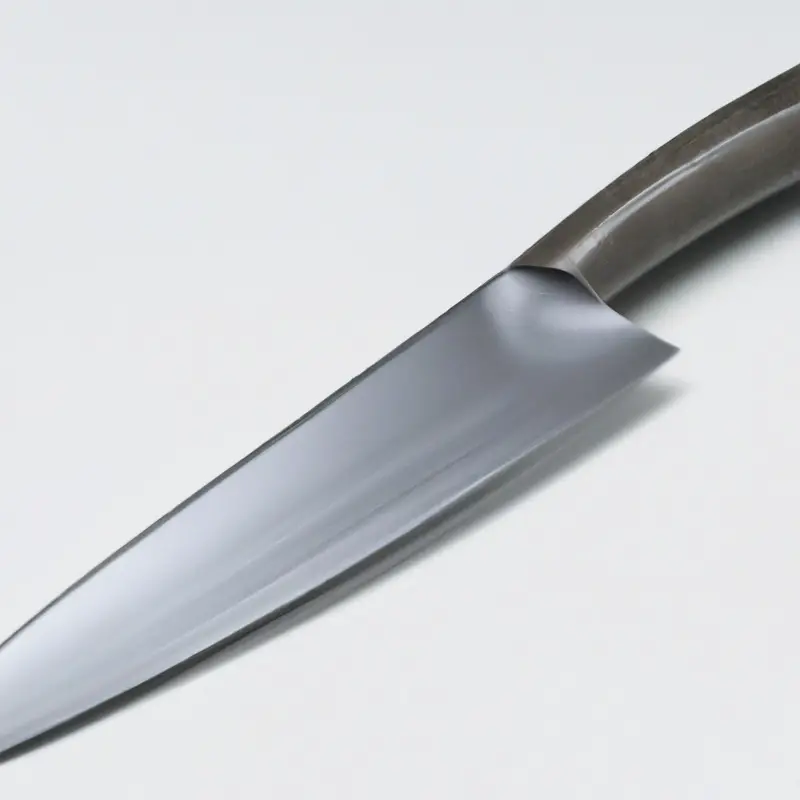
Understanding when to use a whetstone for sharpening your Gyuto knife
To maintain the sharpness of a Gyuto knife, it’s essential to understand when to use a whetstone for sharpening. In general, honing with a honing rod is enough to keep the knife edge aligned.
However, the honing rod does not remove any metal from the blade.
On the other hand, a whetstone allows for real sharpening by removing small amounts of metal when you sharpen. You can use a whetstone when your knife loses its sharpness, and honing with a honing rod does not restore its sharpness.
If you notice any dullness or bluntness on the blade’s edge, it is time to bring out the whetstone.
You can also use a whetstone to refine the edge after honing. It’s crucial to choose the right grit whetstone for your Gyuto knife as using the wrong grit could damage or scratch the knife.
Start with a coarser grit whetstone if your blade is dull and then, move to a finer grit whetstone to refine the edge.
Using a whetstone requires practice and skill, so if you are new to sharpening, it’s best to seek guidance from an expert or reliable sources. With regular practice, you can use a whetstone to maintain your Gyuto knife’s sharpness and keep it performing at its best.
How to maintain the sharpness of your Gyuto knife with regular use
Maintaining the sharpness of your Gyuto knife with regular use is vital to ensure it retains its cutting ability. Here are some tips to help you maintain your knife’s sharpness:
- Hone your knife regularly with a honing rod to keep the blade’s edge straight and sharp.
- Avoid using your knife on hard surfaces or bones, as they can dull the blade quickly.
- Clean your knife immediately after each use, ensuring it is free from debris and moisture that can lead to rusting.
- Store your knife properly in a sheath or a knife block to avoid contact with other objects that may dull it.
- Regularly sharpen your knife using whetstones, depending on the frequency of use. This helps to keep the blade sharp and in top condition.
By following these tips, you can maintain the sharpness of your Gyuto knife and enjoy using it for an extended period.
Proper cleaning and storage methods for maintaining your Gyuto knife’s sharpness
Proper cleaning and storage methods play a crucial role in maintaining your Gyuto knife’s sharpness. After each use, clean your knife with warm soapy water and dry it thoroughly to prevent rust and corrosion.
Avoid soaking your knife in water or putting it in the dishwasher, as it can damage the blade’s edge.
When it comes to storage, always keep your Gyuto knife in a dry and clean place. It’s best to store it in a knife block or a magnetic knife holder to prevent contact with other utensils that can cause nicks or scratches on the blade’s edge.
Never store your knife in a drawer or container without proper protection.
It’s also a good practice to oil your knife regularly to prevent rust formation. Use a food-grade mineral oil or camellia oil and apply a thin layer on the blade before storing your knife.
By following these cleaning and storage methods, you can increase the longevity of your Gyuto knife and maintain its sharpness for an extended period.
Final Verdict
Keeping your Gyuto knife sharp is crucial for achieving the perfect cut every time. Regular sharpening using honing rods or whetstones, coupled with proper cleaning and storage, will go a long way in maintaining the sharpness of your knife.
Remember to always use the correct sharpening angle and to handle the knife with care during use.
With these tips, you can ensure that your Gyuto knife remains sharp and reliable for an extended period. As an expert in the field, I stand by the reliability of the information provided throughout this article.
Implement these practical takeaways and elevate your cooking experience with a sharp and well-maintained Gyuto knife.

